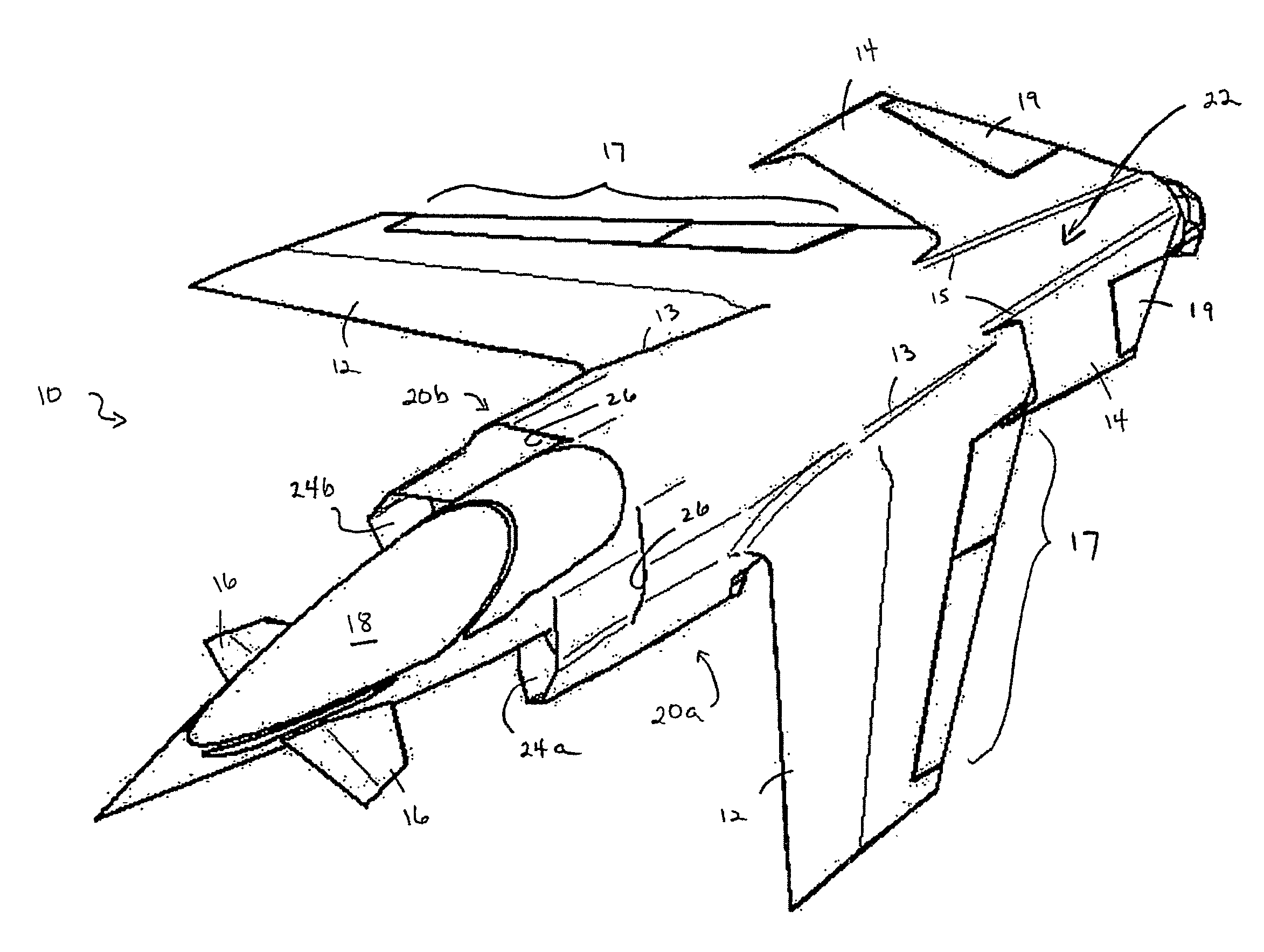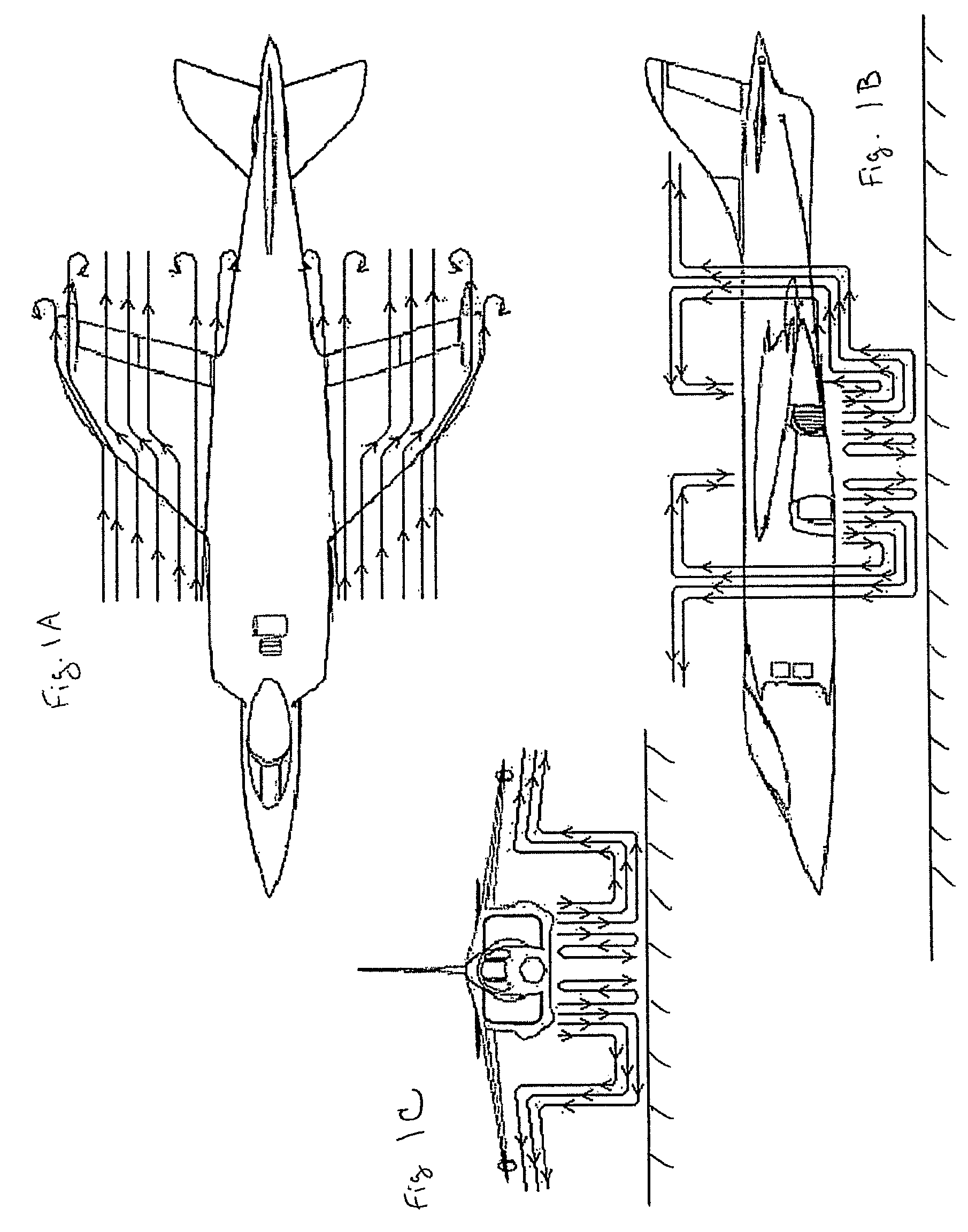VTOL aircraft with forward-swept fixed wing
a fixed-wing aircraft and forward-swept technology, applied in vertical landing/take-off aircraft, aircraft navigation control, transportation and packaging, etc., can solve the problems of no aircraft according to either reference ever built and flown successfully, no aircraft according to either reference has ever been built and flown, and the number of design drawbacks or sensitivities, etc., to achieve strong roll control, reduce the effect of “suckdown” or significantly reduce the effect of weigh
- Summary
- Abstract
- Description
- Claims
- Application Information
AI Technical Summary
Benefits of technology
Problems solved by technology
Method used
Image
Examples
Embodiment Construction
[0024]An embodiment 10 of a fixed-wing VTOL aircraft according to the invention is illustrated generally in FIGS. 2A and 2B. As illustrated in those Figures, the aircraft 10 features forward-swept main wings 12, forward-swept elevons 14 at the rear of the aircraft 10, and canards 16 at the front of the aircraft. In a manned version of the aircraft 10, the aircraft includes cockpit and crew / passenger quarters 18.
[0025]It is known that a forward swept wing configuration is inherently dynamically unstable. Therefore, the wings 12 feature a laminated composite structure that is tailored to dampen what would otherwise be aeroelastically divergent behavior of the wings, in a manner known in the art (e.g., from NASA's X-29 project). The aircraft flight control system (software, fly-by-wire hardware, and computer-controlled flight control surfaces) is also specifically tailored to accommodate the inherent or natural instability of a forward-swept wing configuration, in a manner that is also...
PUM
 Login to View More
Login to View More Abstract
Description
Claims
Application Information
 Login to View More
Login to View More - R&D
- Intellectual Property
- Life Sciences
- Materials
- Tech Scout
- Unparalleled Data Quality
- Higher Quality Content
- 60% Fewer Hallucinations
Browse by: Latest US Patents, China's latest patents, Technical Efficacy Thesaurus, Application Domain, Technology Topic, Popular Technical Reports.
© 2025 PatSnap. All rights reserved.Legal|Privacy policy|Modern Slavery Act Transparency Statement|Sitemap|About US| Contact US: help@patsnap.com



